Confucian Academies/Buddhism Temples
MUJU COUNTY
Pure Muju
Muju as a Tourist Attraction
Muju in the History
Muju under the Four Seasons
Introduction to Muju
How to Find Us
Tourist Information Center
Major Tourist Attraction
33 Scenic Spots in Gucheon-dong
Noted Mountains in Muju
Valleys in Muju
Noted Amusement Parks
- Muju Deogyusan Resort
- Bandi Land
- Taekwondo Park
- Gucheondong Tourism Complex
- Deokyudae Comprehensive Camping Ground
- Bunam Riversides Amusement Park
- Muju Hydro-Pover Generation Plant
Cultural Heritage Sites
Confucian Academies/Buddhism Temples
Natural Monuments
Leisure/Sports
Muju Resort
Mountaineering
Tasty Foods in Muju
- Fish Gruel
- A Korean Table D'horte, 'Sanche Bibimbap'
- Sanchae Jeongsik
- Freshwater Fish Red-pepper Pot
- Oak Mushroom & Rice Soup
Festivals/Cultures
Firefly Festival
Education Center of Traditional Culture
Banditbul
Confucian Academies/Buddhism Temples
Baekryeon Temple
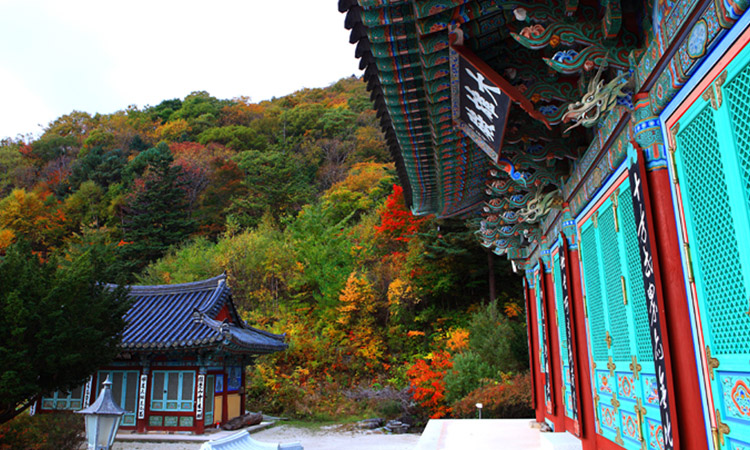
It is an old temple having a legend that it was built and named 'Baekryeon-am' (White Lotus Flower Rock) since a white lotus flower was bloomed out of the ground of the place where a great monk, 'Baekryeon Seonsa', lived secluding himself from the world during the period of King, Shinmun, of Shilla Dynasty.
This place, which is said that it was called 'Gucheondong' since 9,000 monks (Gucheon monks) used to cultivate their religious senses in 14 rock temples during the heyday of Buddhism, was once called 'Gucheondongsa' as a sacred place of Buddhism where numerous great monks, such as Buyong, Buhue, Jeongkwan and Byeokam Daesa, etc., made sensations with their self-training during the middle of Chosun Dynasty.
| Location | in the middle of Mt. Deokyu, Gucheon Valley, (Deokyu Village), Samgong-ri, Seolcheon-myeon, Muju-gun. Type of Cultural Asset: The Substantial Monument No. 62 of Jeonlabuk-do |
|---|---|
| Type of Cultural Asset | The Substantial Monument No. 62 of Jeonlabuk-do |
| Cultural Assets in Possession | Maewoldang Budo (The Tangible Cultural Asset No. 43 of Jeonlabuk-do), Geumgang Staircase of Baekryeon Temple (The Substantial Monument No. 102 of Jeonlabuk-do) |
| Transport | the Seat of Muju-eup ⇒ Gucheondong (National Road No. 37), 38kms: it takes around 40min. by bus. (19times per day) Gucheondong ⇒ BaekryeonTemple(6kms), It takes around 1hour and 30min. on foot. |
Anguk Temple
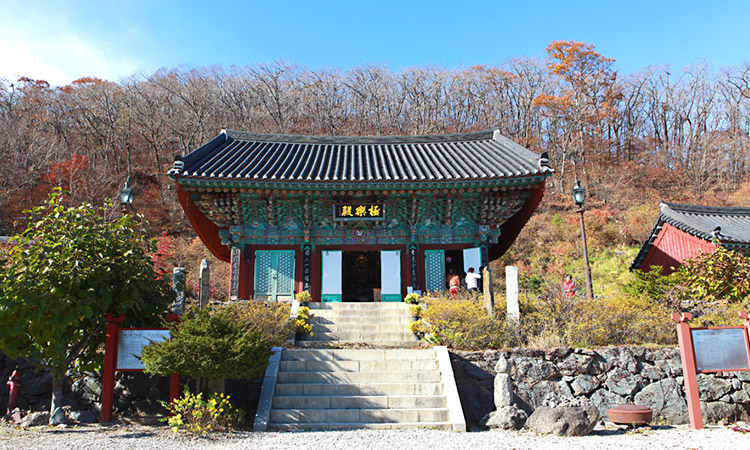
This temple, which was originally situated in the basin of Mt. Jeoksang, is said that a great monk, Wolin Whasang, built it in the 3rd year of King, Chungryeol, during the era of Goryeo Dynasty and also it is said by some others that a great monk, Muhak Daesa, built a fortress and a temple for the preparation of the future of the royal nation in early Chosun Dynasty.
The temple was remodeled in the 5th year of King, Gwanghae, (1613) and, in the next year, Jeoksangsan Sago (a historical archives) was built. So, the monk soldiers had used it as their lodging place in order for them to safeguard the Sago. Until that time, it was called 'Bogyeong Temple' or 'Sangwon Temple', etc.
However, the sanctuary was reconstructed in the 47th year of King, Youngjo, (1771) and also its name was changed as 'Anguk Temple'. Sometimes, it was also called 'Sanseong Temple' meaning a temple in a fortress. The current location of Anguk Temple was decided by having moved it in 1992 since the original location was supposed to be sunk into the upper dam (Jeoksang Lake) for the Hydro-Power Generation Plant.
| Location | Gwoemok-ri, Jeoksang-myeon, Muju-gun (965m) |
|---|---|
| Type of Cultural Asset | The Tangible Cultural Asset No. 42 of Jeonlabuk-do (Geukrakjeon of Anguk Temple) |
| Cultural Assets in Possession | The Tangible Cultural Asset No. 20 of Jeonlabuk-do, Gwoebul (sa) of Anguk Temple |
| Transport | Muju-eup ⇒ Sanjeong Lake, 15kms, It takes around 20min. by car.⇒ Sanjeong Lake ⇒ Anguk Temple (1km), It takes around 20min. on foot. |
Wontong Temple
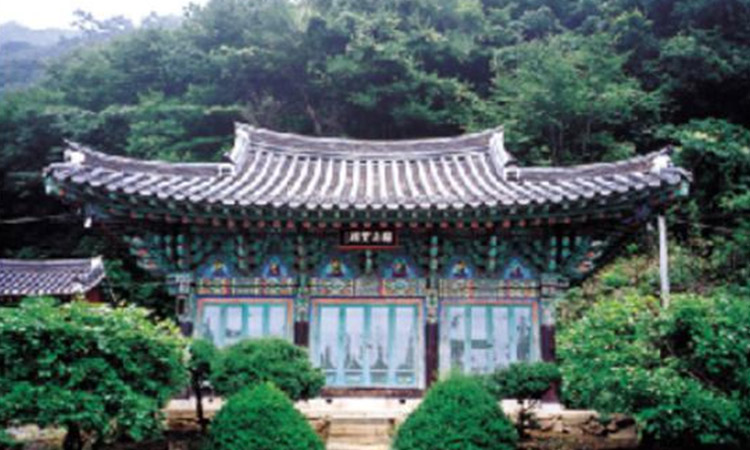
AIt is an old temple, which was built during the era of Shilla Kingdom and a monk, Nambongseonsa, the successor of a great monk, Limseongdang, in Gucheondong used to deliver the Buddha's words. It was remodeled by Taneon and Haeokseonsa, etc., in the 24th year of King, Sukjong and also was a military base for defensing the country from the Japanese invasion since the volunteer soldiers, who fought against Japanese Troops, established its headquarters here in late Chosun Dynasty.
| Location | (Myeongcheon Village) Jukcheon-ri, Anseong-myeon, Muju-gun |
|---|---|
| Type of Cultural Asset | The Substantial Monument No 67 of Jeonlabuk-do |
| Transport |
|
Muju Confucian Academy
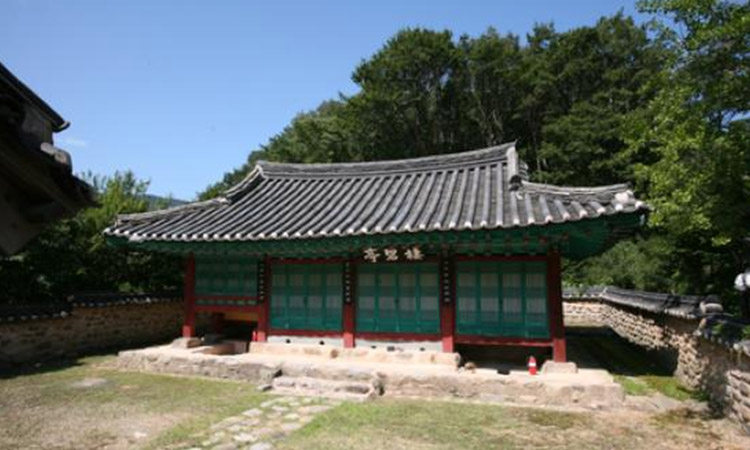
Since the Chosun Dynasty was founded, the royal government encouraged to perform a religious service for Confucius and to bring up Confucian scholars while establishing each Confucian academy in each county in order to promote Confucianism. Muju Confucian Academy was originally located on the north side of the county government office, but since there were many damages by tigers, it was moved to the west side of Hyangro Mountain in the 18th year of King, Sukjong, (1692).
However, the site was too moisty, so it was moved to the current place in the 34th year of King, Sunjo,(1834) again. Currently, Muju Confucian Academy implements a kind of memorial service event for Confucius, 'Seokjeon Daejae' every spring and fall twice a year.
| Location | (Gyodong Village) Eupnae-ri, Muju-eup, Muju-gun |
|---|---|
| Type of Cultural Asset | The Cultural Properties Materials No 103 of Jeonlabuk-do(a building) |
Baeksan Confucian Shrine
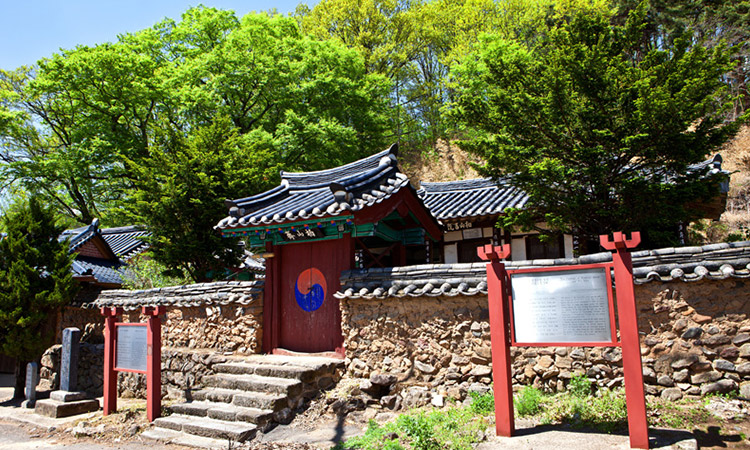
It is a confucian shrine where the portraits of Munhyogong, Ha Yeon, who was posted in the overall government positions including three positions of prime minsters during the period of a King, Sejong, and his wife, Lee Family of Seongsan are kept. The portraits had been worshiped after having kept in Tajinsa, which was built during the period of a King, Sunjong, but it was demolished under the order of Daewongun to remove the shrine during the period of Gojong.
HOnce again, it was rebuilt naming it 'Baeksan Seowon' during the period of a King, Sunjong. It has been said that the portraits, which had been kept in Tajin Confucian Shrine, were painted in the 10th year of the King, Sejong, (1428) by the third son of Ha Yeon and a copy of it has been kept in the Cheonlidae Library, Japan until now.
| Location | (Bukri Village) Hyeonnae-ri, Mupung-myeon, Muju-gun |
|---|---|
| Type of Cultural Asset | Provincial Cultural Asset |
| Cultural Assets in Possession | Portraits of Munhyogong and His Wife (The Tangible Cultural Asset No. 81 of Jeonlabuk-do) |
| Transport | Muju-eup ⇒ seat of Buk-ri Village, Hyeonnae-ri, Mupung-myeon(the National Road No. 30): around 27kms, It takes around 30min. by bus. |
Seobyeok-jeong Pavilion
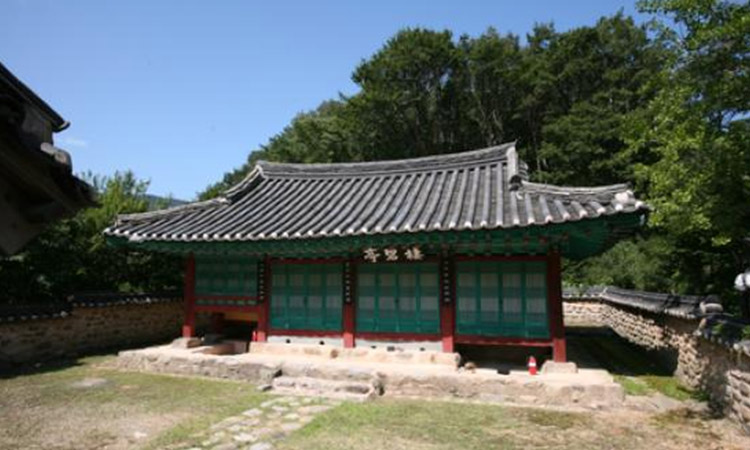
Seobyeok-jeong was a place where Mr. Song Byeong-sun under the pen name of 'Yeonjae', who was posted as a chief justice of the Supreme Court in Chosun Dynasty, trained his students as having discussed with other scholars on the political situations while having stayed at a house built around here after he was so fascinated with this place when he visited this region during the period that he was secluded himself from the world since he was sick and tired of the then political environment.
Yeonjae, Song Byeong-sun, was a loyalist, who kept his loyal mind to the king by committing suicide without putting up with the indignation from the colonization by Japan when the Protectorate Treaty ('Ulsa Boho Joyak')with Japan was signed in 1905.
| Location | (Wolhyeon Village) Dugil-ri, Seolcheon-myeon, Muju-gun |
|---|---|
| Type of Cultural Asset | The Substantial Monument No. 80 of Jeonlabuk-do |
| Transport |
|
SHanpung-ru Pvilion
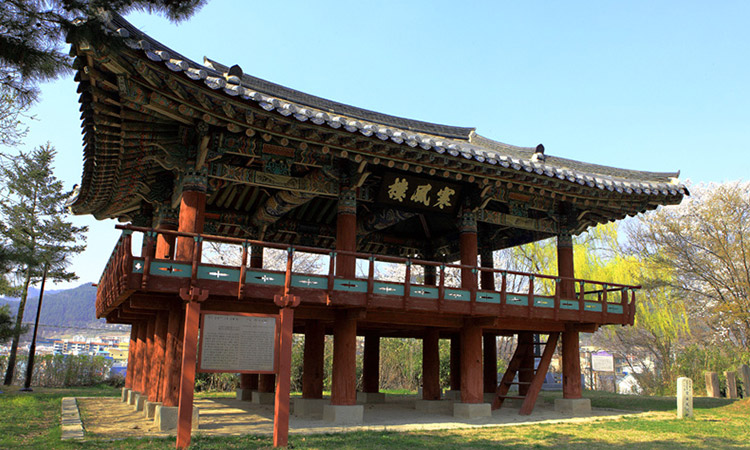
It was a pavilion, which was originally built at the side of a stream in Muju-eup and was renowned as one of the three noted pavilions of Honam Region along with Hanbyeok Pavilion in Jeonju and Kwanghan Pavilion in Namwon in the past while having been acknowledged as the most beautiful one.
From old days, this pavilion, which many famous poetic calligraphers used to visit often and enjoyed their poetical lives at, was burnt on fire at the war during the Japanese Invasion in 1592 and was rebuilt after that. During the Japanese colonial days in Korea, Japanese people moved it to the side of Yansan river in Yongdong-gun and put up a hanging board titled, 'Geumho-ru', but the county members moved it to the current place in 1971
| Location | Dangsan-ri (Jinam Park), Muju-eup, Muju-gun |
|---|---|
| Type of Cultural Asset | the Tangible Cultural Asset No. 19 of Jeonlabuk-do |
| Transport | 5min. on foot from Muju Bus Station (Next to Yaechae Cultural Center) |






